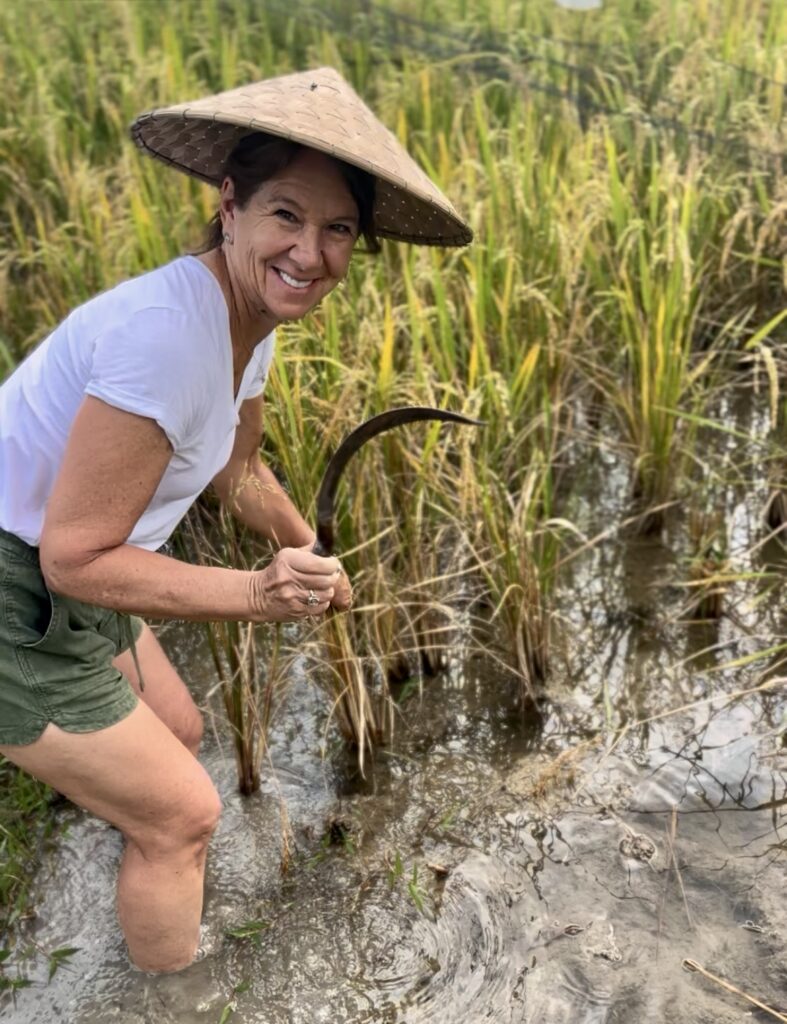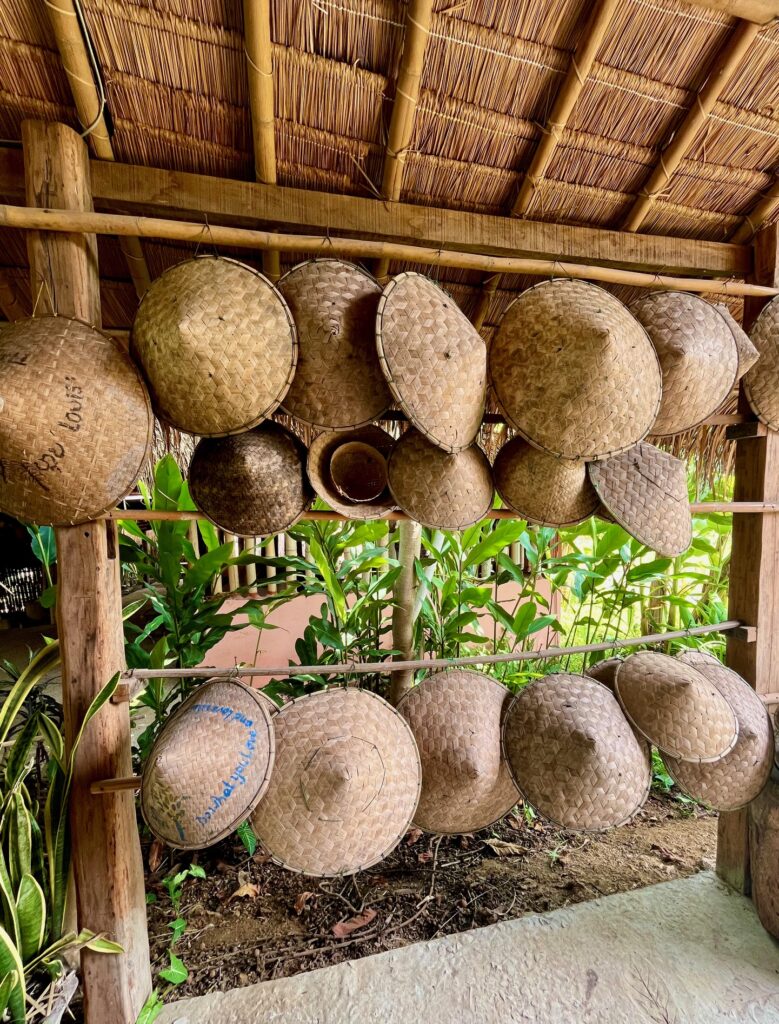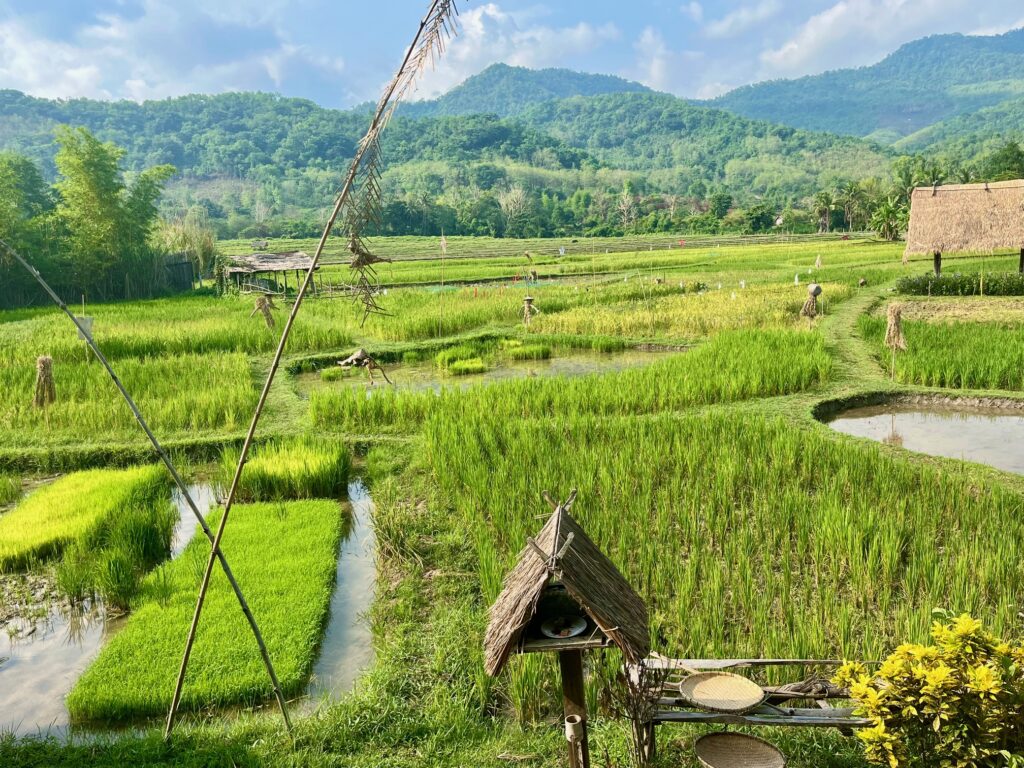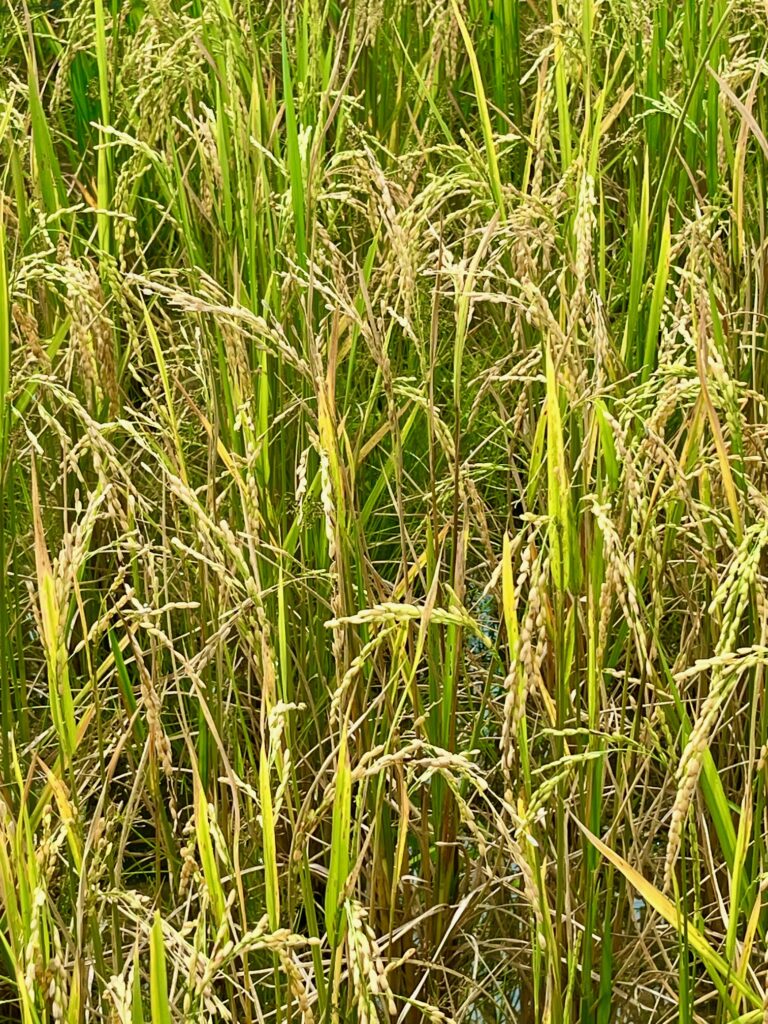Let’s be honest—Laos isn’t exactly topping most people’s bucket list. In fact, it’s safe to say a lot of folks couldn’t find it on a map if their travel plans depended on it…not long ago I may have been included. So when we rolled into Luang Prabang—a charming little city of just 32,000 people tucked between mountains and the Mekong—I was surprised by the charm and character I wasn’t expecting.
But the real heart of this story isn’t geography—it’s rice. At the Living Land Farm, a fifth-generation, family-run farm just outside the city, we didn’t just learn how rice is grown—we did the whole muddy, water buffalo-assisted 14 step process ourselves. Sai, our 4th generation host, told us stories of his great-grandfather starting the farm (and digging a 6km trench from the spring at the top of the mountain) and how it’s grown into something that now gives back to the local community in powerful ways.
A Farm with Deep Roots and a Big Heart
The Living Land Farm isn’t just a picturesque spot for committed travelers to try their hand at rice farming—it’s a thriving community enterprise with a rich history. Established in 2005, the farm was born from the collective efforts of local families in the Phong Van village. These families combined their lands to create an organic farm that preserves traditional rice-growing. But the farm’s mission extends beyond agriculture, it supports various community projects, including free English language classes for local children (and I got to come back to teach a class)!



So, What’s the Deal with Sticky Rice?
Sticky rice isn’t just a side dish in Laos, it’s the dish! It’s the daily staple—eaten for breakfast, lunch and dinner. Sticky rice isn’t just a way of cooking—it’s actually a distinct variety of rice, known for its naturally high starch content that gives it that signature chewy, clumpy texture. It’s the type of rice most commonly grown and eaten in Laos, especially in Luang Prabang, where it’s an essential part of daily life.
As you wander through town, you’ll spot small wood fires burning outside restaurants, with woven bamboo baskets perched above steaming pots. That’s sticky rice being cooked the traditional way—slowly and patiently, over an open flame. It’s a process that feels more like ritual than recipe, and the result is pure comfort in every bite. In Laos, rice isn’t grown for export. It’s not a cash crop—it’s a lifeline. Most rice grown here is for local consumption, to feed families and communities. Farming rice in Laos isn’t about business, it’s about living.



How Rice Is Harvested (in a nutshell):
Harvesting rice is the final stretch of a long, labor-intensive journey. Here’s a simplified version of the process:
Growing & Maturing – After planting, rice takes about 3–4 months to mature. There is a couple rounds of trasplanting along the way.
Cutting – Once the stalks turn golden yellow, they’re cut by hand using a sickle.
Bundling – The cut stalks are gathered into small bundles and left to dry under the sun.
Threshing – The dried stalks are beaten or threshed to separate the grains from the plant.
Winnowing – The grains are tossed into the air so the wind can blow away the lighter husks and debris.
Drying & Storing – The clean grains are further dried and stored for eating or saving as seed for the next season.
When Is Rice Harvested in Laos?
In Laos, the main rice harvest season is from October to December, depending on the region and local climate. Sticky rice, being the staple crop, follows this traditional seasonal rhythm. Most rice is planted during the rainy season (around June to July) and harvested in the dry season, once the fields drain and the grain ripens.
.

Very cool experience!